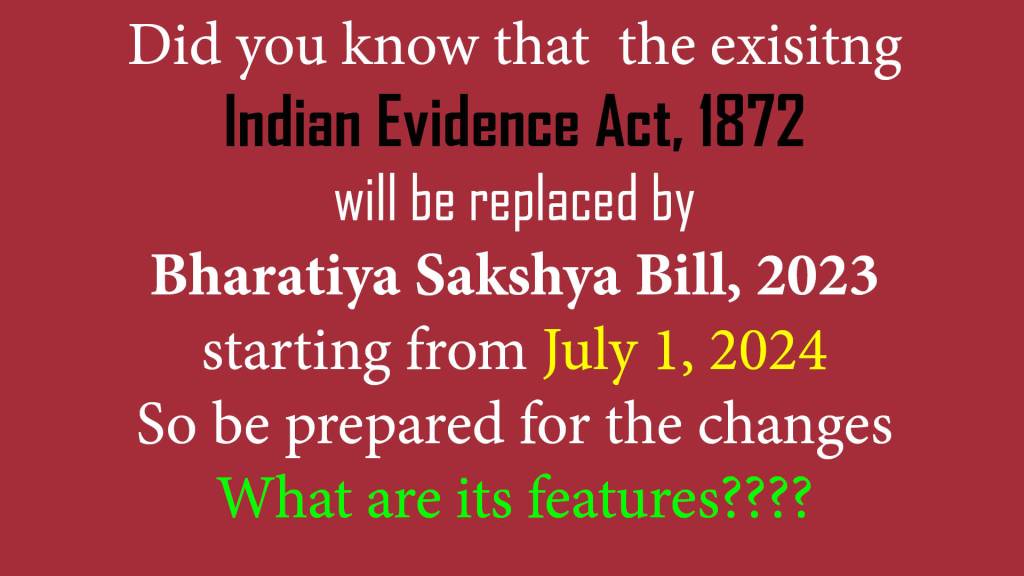Bharatiya Sakshya Adhiniyam The Bharatiya Sakshya Act, 2023

What is Bharat Sakshya Adhiniyam in English?
The Bharatiya Sakshya Act, 2023 (IAST: Bhāratīya Sākśya Adhiniyam; lit. ‘Indian Testimony Act’) is an Act of the Parliament of India. An Act to consolidate and to provide for general rules and principles of evidence for fair trial.
(1) This Act may be called the Bharatiya Sakshya Adhiniyam, 2023. (2) It applies to all judicial proceedings in or before any Court, including Courts-martial, but not to affidavits presented to any Court or officer, nor to proceedings before an arbitrator.
Highlights of the Bill
The Bharatiya Sakshya Bill, 2023 (BSB) replaces the Indian Evidence Act, 1872 (IEA). It retains most provisions of the IEA including those on confessions, relevancy of facts, and burden of proof.
The IEA provides for two kinds of evidence – documentary and oral. Documentary evidence includes primary (original documents) and secondary (that proves the contents of the original). The BSB retains the distinction. It includes electronic records in the definition of documents.
Under the IEA, electronic records are categorised as secondary evidence. The BSB classifies electronic records as primary evidence. It expands such records to include information stored in semiconductor memory or any communication devices (smartphones, laptops).
Under the IEA, secondary evidence may be required under various conditions, such as when the original is in the possession of the person against whom the document is sought to be proved or has been destroyed. The BSB adds that secondary evidence may be required if the genuineness of the document itself is in question.
Key Issues and Analysis
The Supreme Court has recognised that electronic records may be tampered with. While the BSB provides for the admissibility of such records, there are no safeguards to prevent the tampering and contamination of such records during the investigation process.
Currently, electronic records must be authenticated by a certificate to be admissible as documents. The BSB retains these provisions for admissibility. The BSB also classifies electronic evidence as documents (which may not need certification). This creates a contradiction.
Under the IEA, a fact discovered due to information received from an accused in police custody may be provable. The BSB retains this provision. Courts and Committees noted that facts may be discovered in police custody by coercion, and without adequate safeguards.
The IEA (and the BSB) allows such information to be admissible if it was obtained when the accused was in police custody, but not if he was outside. The Law Commission recommended to remove this distinction.
The Law Commission has made several recommendations, which have not been incorporated. These include the presumption that the police officer caused the injuries if an accused was injured in police custody.
Leave a comment